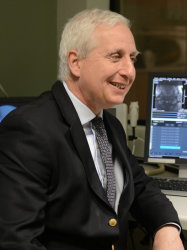BibTex format
@inbook{Firmin:2018:10.1016/B978-0-323-41561-3.00008-2,
author = {Firmin, D and Keegan, J},
booktitle = {Cardiovascular Magnetic Resonance: A Companion to Braunwald’s Heart Disease},
doi = {10.1016/B978-0-323-41561-3.00008-2},
pages = {75.e2--83.e2},
title = {Use of Navigator Echoes in Cardiovascular Magnetic Resonance and Factors Affecting Their Implementation},
url = {http://dx.doi.org/10.1016/B978-0-323-41561-3.00008-2},
year = {2018}
}

